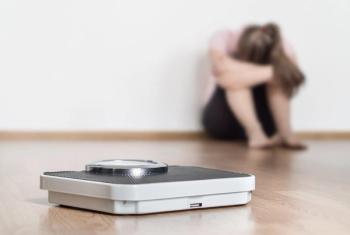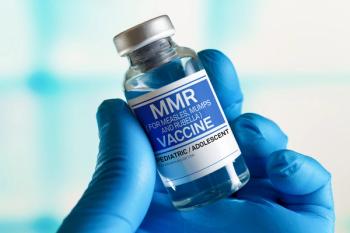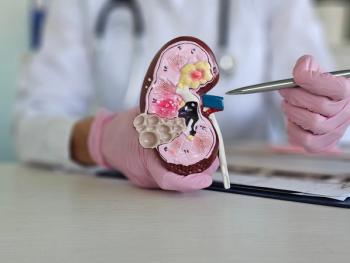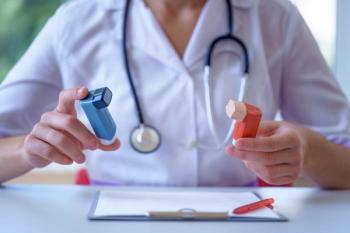
Avella Partners with Novartis to Boost Oral Oncology Adherence Rates
Specialty Pharmacy Times spoke with Eric Sredzinski, PharmD, AAHIVE, vice president, clinical affairs at Avella, to find out more about their adherence initiative with Novartis and how the GlowCap can help optimize patient health.
Avella recently announced an expansion of its GlowCap program to patients taking Novartis Pharmaceutical oncology products for certain FDA-approved indications. Specialty Pharmacy Times spoke with Eric Sredzinski, PharmD, AAHIVE, vice president, clinical affairs at Avella, to find out more about the adherence initiative and how the GlowCap can help optimize patient health.
-----------------------------------------------
SPT: What are the criteria for enrollment in the
ES: Avella is offering an “open” enrollment for all Novartis oncology patients filling their prescriptions through us and meeting the following inclusion criteria:
- Drug/disease state combination Tasigna for chronic myeloid leukemia (CML) Gleevec for all FDA approved indications, EXCEPT CML Exjade for all FDA approved indications Afinitor for all FDA approved indications
- Patient must verbally opt-in
- Patient must have electricity
- Patient must be in an AT&T coverage area
SPT: Tell us a bit about the initial GlowCap pilot program with Novartis. Which drugs were used in the program, and for which conditions?
ES: The pilot program was limited to 120 patients with the following inclusion criteria:
- Gleevec for patients with gastrointestinal stromal tumors
- Tasigna for patients with CML
- Patient must verbally opt-in which is recorded
- Patient must have electricity
- Patient must be in an AT&T coverage area
The pilot phase was used to test the hypothesis that an electronic medication reminder device and a clinical program could improve medication adherence rates.
SPT: How do the GlowCap and blister packs differ? Does the technology measure by weight how much medication has not been used yet, or does it measure how many times the container has been opened?
GlowCap is a wireless prescription bottle cap and light that reminds patients to take medication through sound and light signals. A GlowPack has been developed with the same technology to hold medications that are unit doses such as Afinitor (everolimus) that can’t be removed from their blister pack due to stability issues. The GlowPack is similar in appearance to a pencil case and each time the zipper is opened and closed, the electronics record the event. Currently, the GlowCaps and Glowpacks do not measure the weight of the contents. Rather, they measure the number of times the cap or pack is opened. The opening of the cap or the pack is a means to self-report a patient’s medication adherence.
SPT: How much would the GlowCap cost the average consumer? Will insurance cover the monthly fees to power the GlowCap?
ES: Prices may vary. Currently, insurance companies are not involved in our trial. However, we believe that when we present the improvements in patient adherence rates and the decrease in health care costs associated with a GlowCap/Pack, insurance companies will have an option to help their high-risk patients.
SPT: How will you evaluate the success of the GlowCap in driving better adherence?
ES: Avella and Novartis will utilize the self-reported adherence rates the GlowCaps/Packs are registering along with patient refill rates to determine improvements in persistence. Patients receiving a GlowCap (the intervention group) will likely be compared to the patients not receiving a GlowCap (the control group). In addition to the adherence metrics, clinical pharmacists are contacting patients weekly that have registered less than 85% adherence with their GlowCaps. The calls by Avella pharmacists will identify any patient barriers to adherence and utilize a “tool box” of adherence strategies to improve patient outcomes, and finally communicate with their provider to ensure a continuity of care.
SPT: How many people are/were included in the Novartis pilot program? (n=?)
ES: The initial pilot program included 120 patients. At this time, Novartis is committed to enrolling as many patients that qualify. By expanding our pilot program, Avella anticipates at least a 50% enrollment rate with our eligible patients.
SPT: What will happen with the data from the GlowCap? Can it be sold to PBMs and payers, or is the information considered private patient information? Is the information de-identified at any point?
ES: All data is securely housed with Avella, and data shared with Novartis is encrypted to ensure that protected health information is not released. Avella and Novartis own the data and will certainly review the results with the intent of publishing the information in a peer-reviewed journal.
SPT: Could payers ever use proof of a patient's nonadherence against them if they wound up in the hospital? Is there a chance payers or PBMs will use the adherence data to drive future coverage decisions for certain patients or deny coverage for certain procedures as a result of poor patient compliance?
ES: There are a number of reasons for patient nonadherence, and it would seem unlikely that a payer would penalize a patient for such behavior. With medication nonadherence resulting in approximately $300 billion per year of health care costs, payers are researching outcomes data that improve medication adherence rates.
SPT: How does this technology work for patients who are taking numerous specialty medications with multiple different bottles? Is there a multi-pill option?
ES: Currently, this program is for a single medication. However, the intent of a GlowCap is to change a patient’s behavior. If a patient experiences an improvement in taking their Tasigna for their CML, the hope is that they are also taking their diabetic and hypertension medication with the same vigor.
In addition, Avella offers a bi-directional text message tool option. This serves to provide medication reminders and refill reminders. Because the messaging is bi-directional, it provides us with adherence metrics. More information can be found at
SPT: Couldn't it be considered dangerous to separate pills from their original bottle, which includes instructions and dosage information? If a patient takes many medications that look alike, how can he or she tell what is actually in the GlowCap bottle without an information label?
ES: Every GlowCap prescription bottle sent from Avella contains a prescription label and appropriate auxiliary labels. In addition, the prescription labels from Avella identify the medication with the markings on the tablet or capsule. Patients also receive a number of education materials on the medication and receive a telephone call from a clinical pharmacist to review the medication and their disease state. This outbound call is utilized to educate the patient on what the medication is for, instructions and dosing, potential drug interactions, potential adverse reactions, when to contact their provider, and what to expect throughout the course of therapy.
Newsletter
Stay informed on drug updates, treatment guidelines, and pharmacy practice trends—subscribe to Pharmacy Times for weekly clinical insights.














































































































































































































